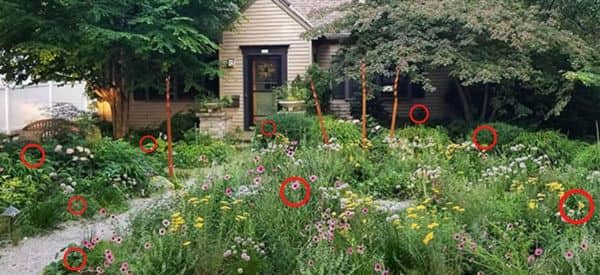
10 Beneficial Plants The Government Doesn’t Allow You To Grow
There are many medicinal plants you can grow in your own backyard. However, there are some plants that, although beneficial, the government does not want you to grow.
1. Pseudocorus (Yellow Iris)
Yellow Iris can be found in and around streams and ponds, along shorelines, and in marshes. It is native to Europe, Asia, and northern Africa, and can be found in much of the United States.
It is a perennial aquatic herbaceous plant that grows up to five feet tall in shallow water and along shorelines.
The Benefits of Yellow Iris
The root of the yellow iris plant has been known to bring relief to an aching tooth, soothe coughs, and be used as an astringent.
Why doesn’t the government want you to grow it?
Yellow Iris expands quickly and can often replace or crowd other aquatic plants. A large iris population can also reduce the habitat available to native fish and other wildlife. This thick-growing plant can also clog irrigation systems and streams, narrowing waterways. All parts of the plant are also toxic to animals.
2. Pueraria Montana (Kudzu)
Kudzu, known as “mile-a-minute” and “the vine that ate the South,” is a rapidly growing vine native to East Asia and can be found across the southeastern United States.
Kudzu is a perennial vine that produces a long stem with reddish-purple flowers.
The Benefits of Kudzu
In Traditional Chinese Medicine, Kudzu is used as an anti-inflammatory to treat various conditions, including alcoholism, heart disease, menopausal symptoms, diabetes, fever, colds, and pain.
Why doesn’t the government want you to grow it?
Kudzu is an extremely fast-growing plant, growing over a foot in a single day. It outcompetes everything around it, from grasses to trees, altering soil chemistry by fixing nitrogen to invaded soils, and decreasing biodiversity. It can quickly take over yards, lots, and even forests. It’s nearly impossible to stop.
3. Saccharum spontaneum (Wild Sugarcane)
Originally native to India, sugarcane is a perennial grass that grows in warmer climates like Hawaii, Louisiana, Florida, and Texas.
Sugarcane is a tall grass with oatmeal-colored plumes.
The Benefits of Wild Sugarcane
Sugarcane has been used to treat urinary disorders, remove kidney stones, and rehydrate the body. It also helps encourage lactation for breastfeeding mothers.
Why doesn’t the government want you to grow it?
Sugarcane requires a lot of water to grow properly and can be damaging to the soil. It is illegal to grow in Maryland, and many other states are working on legislation to fine planters.
4. Lythrum salicaria (Purple Loosestrife)
Purple Loosestrife is native to Europe, Asia, and northern Africa. It grows throughout North America and Canada and can be found in marshes, open streams, and floodplains.
They are perennial herbs with purple flowers that grow in long spikes at the tip of their branches.
The Benefits of Purple Loosestrife
Purple loosestrife is commonly used as a tea to treat diarrhea, menstrual problems, and infections.
Why doesn’t the government want you to grow it?
Purple loosestrife affects both wildlife and agriculture. It grows rapidly, germinating faster than many native wetland species. Because of how quickly it grows, it eliminates food, nesting, and shelter for wildlife.
Purple loosestrife is illegal to grow in Michigan.
5. Glechoma hederacea (Creeping Charlie)
Creeping Charlie is an herbaceous perennial that grows in moist, fertile soils. It’s native to the British Isles but can be found all over North America.
Creeping Charlie produces bright green round or kidney-shaped leaves with scalloped edges.
The Benefits of Creeping Charlie
Creeping charlie has a long history of medicinal use for sinus problems, coughs, colds, and to fight inflammation.
Why doesn’t the government want you to grow it?
Creeping Charlie blocks sunlight, it overtakes roots, and blocks water and nutrients to other plants. It kills everything around it and is extremely difficult to get rid of. It is also toxic to horses, swine, and cattle.
Creeping Charlie is illegal to grow in Connecticut.
Related: The Berry That Is Illegal To Grow (In Some States), But Perfectly Fine To Forage (Video)
6. Berberis thunbergia (Japanese Barberry)
Native to Asia, the Japanese Barberry is a shrub commonly found in shaded forests across the North East.
Japanese Barberry is a woody shrub with curving branches with sharp spines, and small leaves.
The Benefits of Japanese Barberry
Japanese Barberry can fight inflammation, boost the immune system, and treat digestive orders.
Why doesn’t the government want you to grow it?
Japanese Barberry is banned in New York, Maine, and Minnesota. This is because the plants provide an ideal habitat for mice and ticks.
7. Alliaria periolata (Garlic Mustard)
Garlic Mustard is native to Europe and has become common throughout much of the United States.
Garlic mustard is an herbaceous, flowering plant with heart-shaped leaves that smell like garlic when crushed.
The Benefits of Garlic Mustard
Garlic mustard improves circulation, promotes good digestion, and has antiseptic properties.
Why doesn’t the government want you to grow it?
Each plant produces up to 500 tiny seeds, making it almost impossible to get rid of. It often grows on forest margins and prevents other plants from growing nearby.
8. Elaeagnus umbellata (Autumn olive)
Native to Asia, the Autumn olive is a shrub found throughout the United States. Autumn olive can grow up to 20 ft tall and 30 ft wide, with oval-like leaves.
The Benefits of Autumn olive
Autumn olive contains antioxidants, vitamin C, and vitamins and minerals. It can treat coughs and lung afflictions and may reduce cancer risk.
Why doesn’t the government want you to grow it?
Autumn olive outcompetes and displaces native plants, affecting biodiversity. It is illegal to grow Autumn olive in Michigan
9. Fallopia japonica (Japanese Knotweed)
Japanese knotweed is a plant in the Buckwheat family. It grows along streambanks in full sun to part shade.
The Benefits of Japanese knotweed
Japanese knotweed contains potent antioxidants, stimulates the immune system, soothes coughs, and reduces inflammation.
Japanese knotweed is a shrub-like perennial that produces flowers in creamy white clusters.
Why doesn’t the government want you to grow it?
Japanese knotweed grows rapidly and has extensive root systems. It can grow up to 10 feet per month and even extend through concrete and home foundations.
It is illegal to grow Japanese knotweed in Michigan.
10. Hedera helix (English Ivy)
English Ivy is native to Europe, Western Asia, and Nothern Africa. It can be found throughout the eastern United States and in the west from Arizona to Washington State. It acts both as a ground cover and a climbing vine.
The Benefits of English Ivy
English Ivy has antioxidant and anti-inflammatory benefits and is useful in reducing coughs, colds, and viral infections.
English ivy is an evergreen perennial vine with light veins and glossy green leaves.
Why doesn’t the government want you to grow it?
English ivy is an aggressive invader that threatens vegetation by blocking sunlight, impeding photosynthesis, and weakening and killing trees. It is illegal to grow in Oregon.
Visit our website to learn more about the many beneficial uses of plants and herbs.
You may also like:
Foraging Calendar: What to Forage in December
Backyard Projects That Might Get You Arrested (Video)
The Medicinal Benefits of Your State Flower

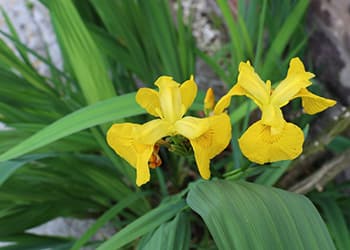
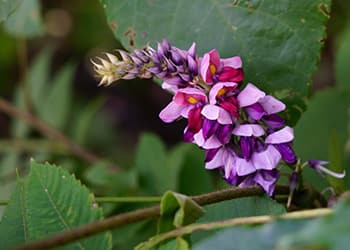
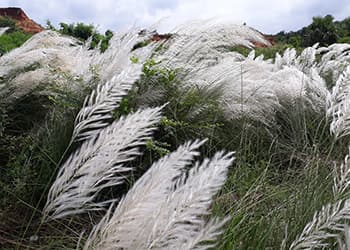
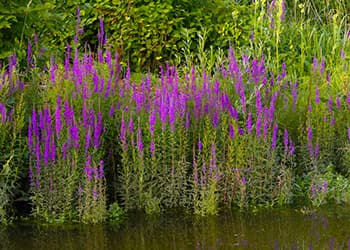
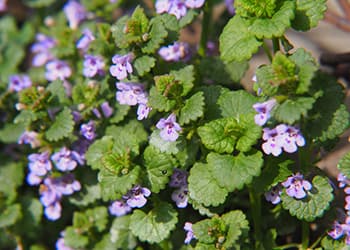
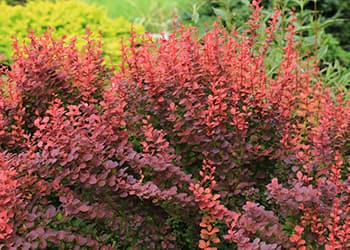
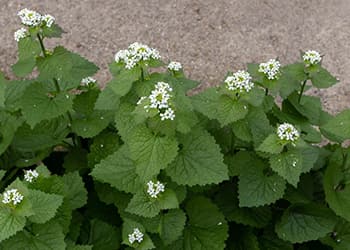
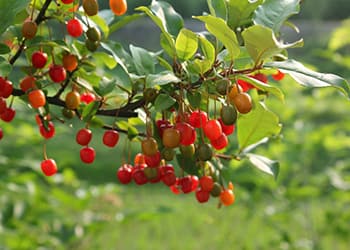
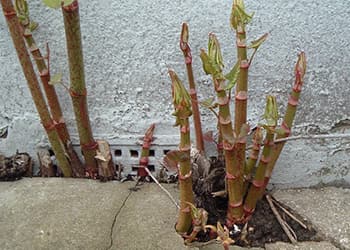

Sounds like all good reasons not to plant these invasive species! Do some homework and find indigenous plants to propagate with similar benefits. All regions have some. Don’t disrupt the natural balance that’s intended. Who cares if “the Government” doesn’t want you to grow… it’s common sense!
We have 4 of these plants growing wild on our property and I can guarantee that I will be fighting them for many years to come. In the case of garlic mustard we simply eat it as often as we can and pull it before the flowers set. Yet it’s back with vigor the next year. I also use the Creeping Charlie without restraint and it’s not in the least diminished in strength. The Autumn Olive has been behaving itself and there are no new trees popping up in the vicinity. I have tried to use this plant but it is thorny and difficult to harvest the tiny fruits. My aim is to restore the natives on my land and thus these plants do thwart my efforts with tenacity.
Hello Cheri,
Thank you so much for sharing your experience with these plants!
We really appreciate it.
Many blessings and good health!
I think it is important to note that the government doesn’t want you to grow these plants because the plants are invasive, not because they are trying to control us. The native flora are endangered by planting these plants. There are other NATIVE plants which give the same or similar benefit to our human health and well-being which will not disrupt the local system.
About ad on this page of “The Lost Superfoods” book:
ClickBank
IMPORTANT!
This product is inactive and no longer for sale… —???
Hello Al,
We’re sorry to hear you encountered issues ordering our book.
An email has been sent to you with an alternative purchase link.
Many blessings and good health!
I’m afraid “the cat is out of the bag” as far as curtailing these invasive species. I am a Master Gardener Volunteer with Cornell Cooperative Extension, so understand the concern we all have for protecting native habitats that are being over-run. However, I am also by profession an acupuncturist and Chinese Medicine herbalist, and understand why these herbs are being touted: Kudzu is being extensively researched in East Asia as a beneficial plant in the treatment of stomach cancer (as well as a cure for upset tummies and hangovers!) it’s also a great thickening agent in cooking; Berberine is tremendously helpful as a hepato-tonic and in regulating blood/glucose; Knotweed root can be eaten, but is also being used to treat vector-borne diseases such as Lyme’s; and so on. Rather that vilifying these plants, I feel we should be looking at how to harness their benefits, while also controlling their spread. (Invasive Plant Medicine, by Timothy Lee Scott is a good resource). Forsythia is a plant native to NE US, but is very aggressive. Do we demonize it’s beautiful yellow heralding of Spring! Meanwhile, best of health to all!
Hello Jo Anne,
Thank you so much for sharing all this with us.
We really appreciate it.
Many blessings and good health!